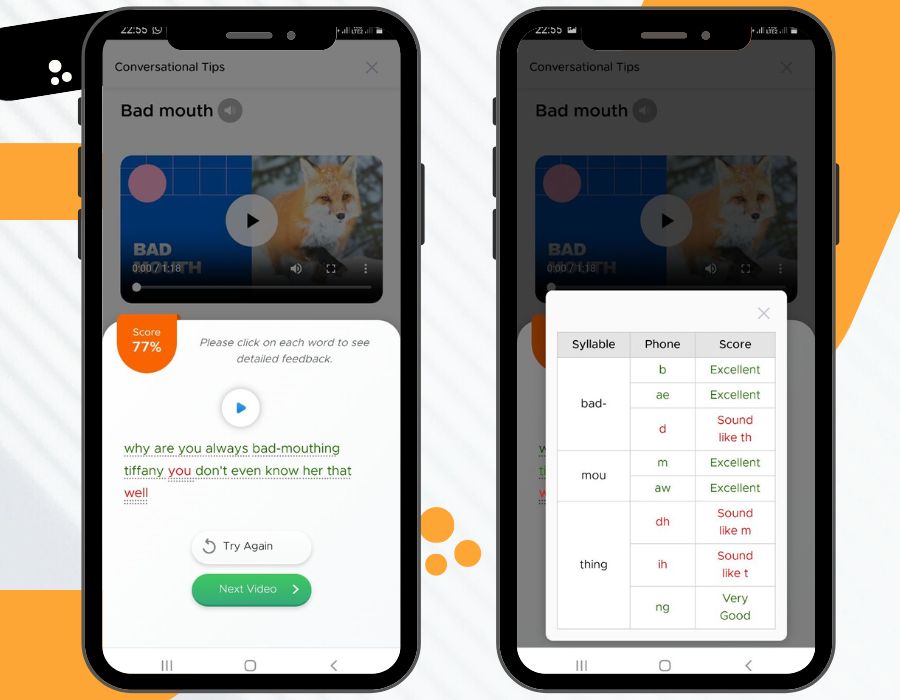
In the annals of education, traditional methods of language learning, characterized by classroom settings, textbooks, and face-to-face interactions, have held their ground for centuries. However, the digital revolution has ushered in an era where learning is not confined to a physical space or limited by geographical boundaries. The rise of pronunciation apps, emerging as frontrunners in this digital learning evolution, are reshaping the landscape of language acquisition.
The first wave of pronunciation applications marked a significant departure from conventional learning modalities. These apps were characterized by their simplicity and focus on aiding self-learning enthusiasts. The adoption rate soared, as evidenced by burgeoning download statistics and the influx of positive user feedback. Language learning was no longer a passive activity but an interactive, engaging experience.
Pronunciation apps stand distinguished for their interactive learning modules. Users can now engage with dynamic content, making learning not just informative but also entertaining. Customization features allow learners to tailor their experiences, focusing on individual strengths and weaknesses. The introduction of AI has further refined this personalized journey, ushering in predictive learning and adaptive content delivery.
The universal accessibility of these apps means anyone with a smartphone can embark on a language learning journey. Efficiency and effectiveness have become the hallmarks of this new era, where interactive learning enhances retention. The multifaceted engagement strategies of these apps ensure that learners are not just passive recipients but active participants in their learning process.

In the evolving landscape of apps, ChatterFox has carved a distinct niche for itself. It has not just become a tool but a companion in the language learning journey of many. What sets it apart is its unique amalgamation of technology and pedagogical insights to make language learning a personalized and enjoyable experience.
Users of ChatterFox often narrate their stories of transformation with a sense of admiration for its intuitive design and user-centric approach. The app ingeniously integrates AI to provide real-time feedback, making the learning process dynamic and responsive. Learners find themselves not just recipients of information but active participants in a dialogic learning process.
ChatterFox’s focus isn’t just on helping learners acquire a new language but also on mastering the nuances that make communication effective and engaging. Every feature of the app is engineered to systematically dismantle barriers that learners often face, turning the daunting task of language acquisition into an enjoyable journey. It is not just about learning a language but about embracing a culture, understanding its nuances, and becoming a part of a global conversation where every voice is valued, and every accent has a place.
In the vast ecosystem of pronunciation tools, ChatterFox stands as a testament to the power of technology when ingeniously combined with educational insights. It reaffirms the belief that learning a new language can be as intuitive as it is transformative, making the global village not just a concept but a lived reality for its users.
However, the journey is not without its hurdles. Technical glitches, content quality, and user interface design remain areas for improvement. Yet, every challenge presents an opportunity. Innovations are underway to enhance user experience, making learning more immersive and responsive to individual needs.
AI stands as the vanguard of this innovative surge. Personalized learning paths, powered by sophisticated algorithms, ensure that learning is adaptive. Real-time feedback mechanisms are not just correcting errors but also predicting areas of struggle, offering preemptive learning solutions.
The horizon is aglow with the prospect of VR and AR integration, promising immersive learning environments where language is not just heard but also experienced. In this globalization era, apps are not just tools of learning but bridges fostering international communication and mutual understanding.
Educational institutions are not immune to this wave. Curriculum integration of apps is blurring the lines between formal and informal learning. The role of teachers is evolving; they are now facilitators, guiding students in a world where information is at their fingertips.
As we stand at this juncture, apps have proven their mettle, transforming from novelty to necessity. The future is not a distant, abstract concept but a tangible reality, shaped by innovations happening at this moment. Language learning is not just about communication but connecting the global village, where boundaries are defined by creativity and innovation rather than geography.
For the avid learners and the curious minds, a repository of app recommendations and expert insights await. Apps like ChatterFox, Rosetta Stone, and Pimsleur are goldmines of interactive learning. Experts, at the confluence of technology and education, offer forecasts that are not just predictions but roadmaps to a future where learning is as natural as breathing, and boundaries to acquisition are self-imposed rather than structural.